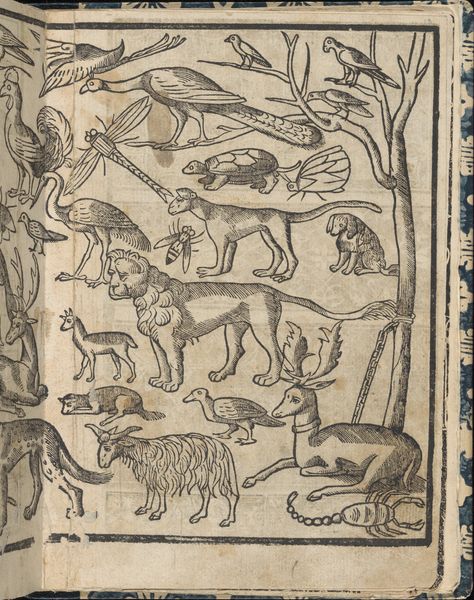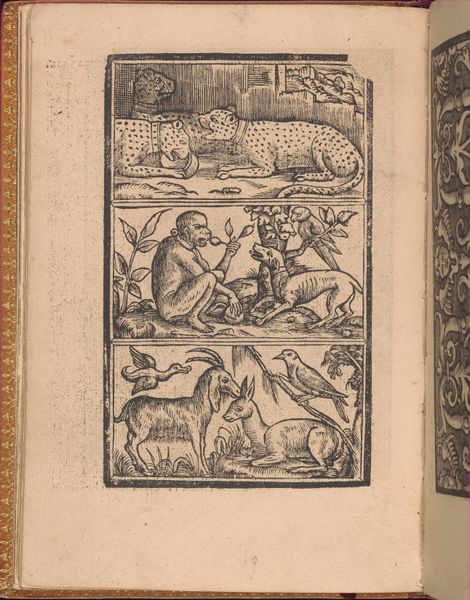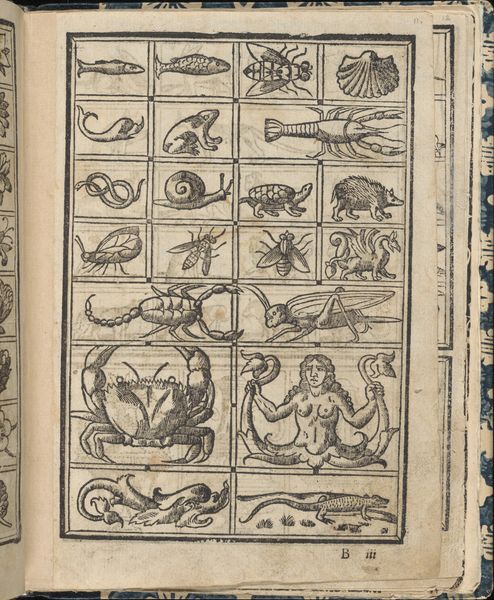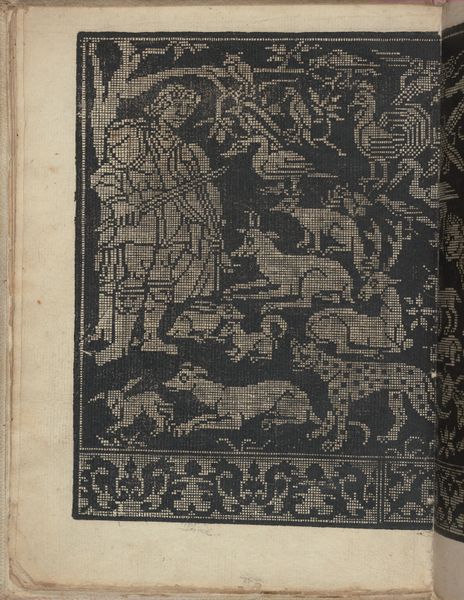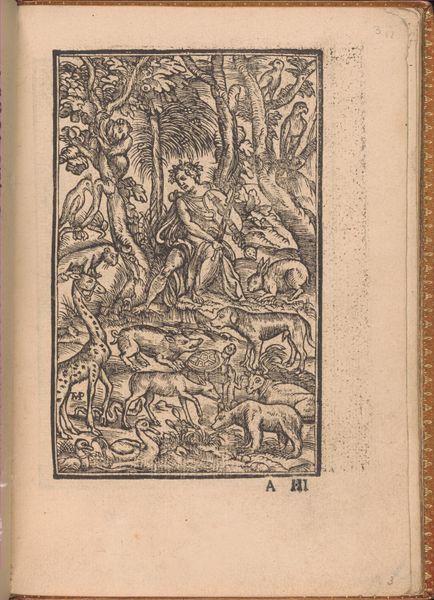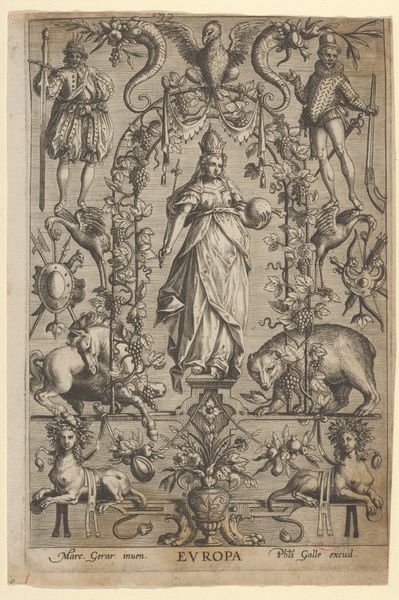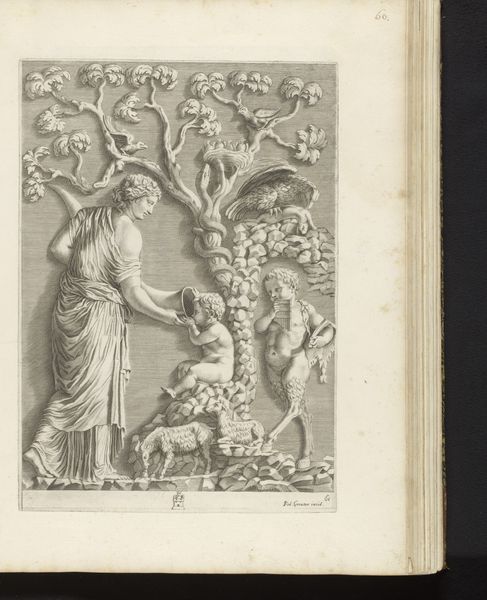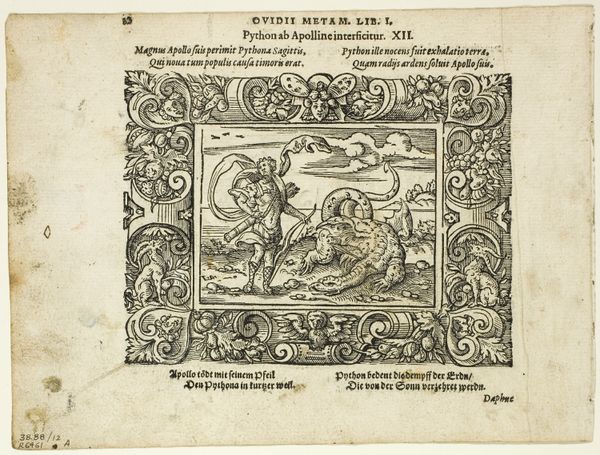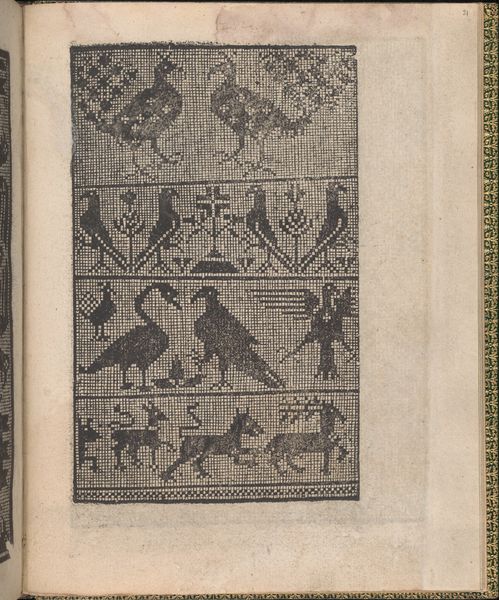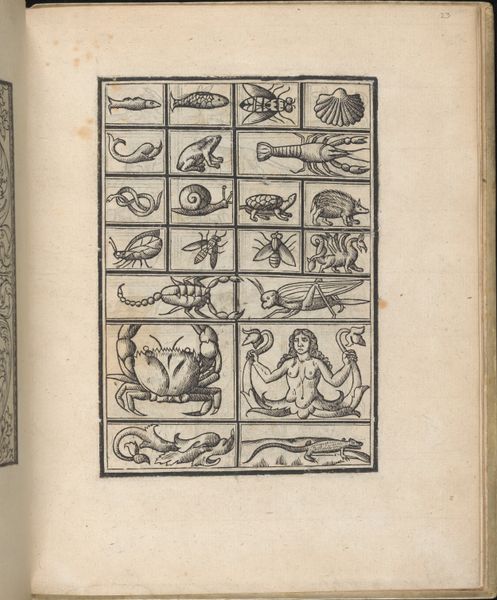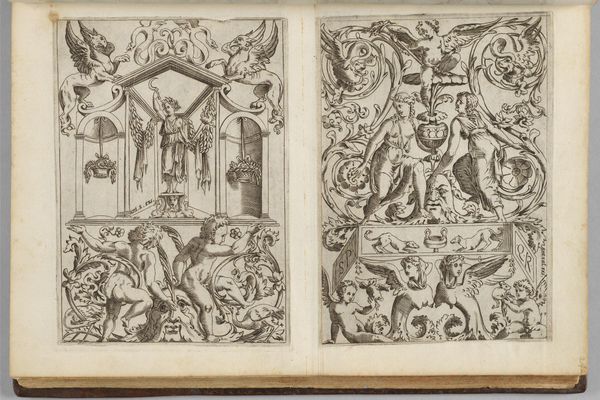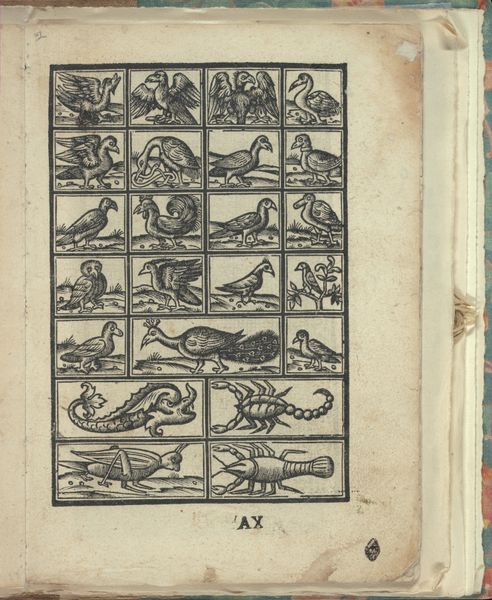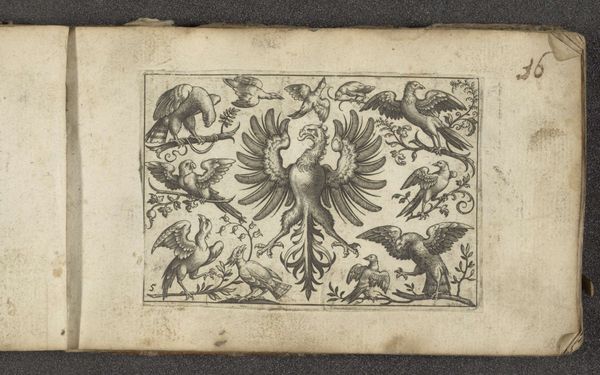
drawing, print, ink
#
portrait
#
drawing
#
toned paper
#
medieval
#
animal
# print
#
pen sketch
#
book
#
sketch book
#
bird
#
figuration
#
personal sketchbook
#
ink
#
ink drawing experimentation
#
pen-ink sketch
#
men
#
pen work
#
sketchbook drawing
#
genre-painting
#
storyboard and sketchbook work
#
musical-instrument
#
sketchbook art
Dimensions: Overall: 7 13/16 x 6 3/16 x 3/8 in. (19.8 x 15.7 x 1 cm)
Copyright: Public Domain
Curator: What strikes me first is the overall effect. It’s got this quaint, almost folksy quality that I wasn’t expecting. The layout feels dense and lively at the same time. Editor: We're looking at page 12 from Giovanni Antonio Tagliente’s "Essempio di recammi", created around 1530. It’s a print using ink on toned paper, currently held at the Metropolitan Museum of Art. These "recammi" examples were pattern books for embroidery, targeting women in elite social circles. Curator: Elite indeed! A hunter playing his instrument surrounded by potential prey. What does it say about a woman’s perspective who, at this period in time, would stitch this into fabric? And what’s with all the animals, from birds to deer? Is this meant to convey abundance, dominion? The male figure placed as more relevant within this frame is worth pondering in the face of gendered labour. Editor: It is a highly stylized image, isn’t it? The animals all possess this stillness, posed rather than living. Think about the socio-economic factors: Embroidery was a significant occupation, linking domestic craft to global trade and status display. A lady embellishing her clothing or home linens with these images showcases refinement and wealth but perhaps it also underscores social hierarchies with the figure overlooking nature's beings. Curator: Exactly, we can read the animal imagery as representations of wealth, sure, but perhaps also consider them in relation to broader political dynamics. Was there a visual rhetoric developing where women were stitching messages around status and access to natural resources? And beyond the mere illustration of craft; was there an attempt to reflect back on an artist's personal sketchbook? Editor: Fascinating point, yes! And I am taken by your focus on the "personal sketchbook". But I find the formal aspects really telling here, the ways these patterns get circulated, copied and adapted... This suggests a really vital connection between artistic creation and daily life during that era. It makes us understand what they valued in terms of luxury items and cultural displays of social standards, no? Curator: True. Considering this image now encourages us to explore the layers embedded within decorative art. Editor: Agreed, it is far from frivolous. Examining historical objects offers glimpses into a past world shaped by socio-cultural influences.
Comments
No comments
Be the first to comment and join the conversation on the ultimate creative platform.
